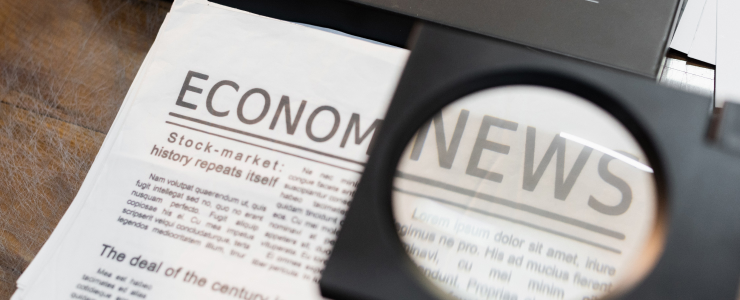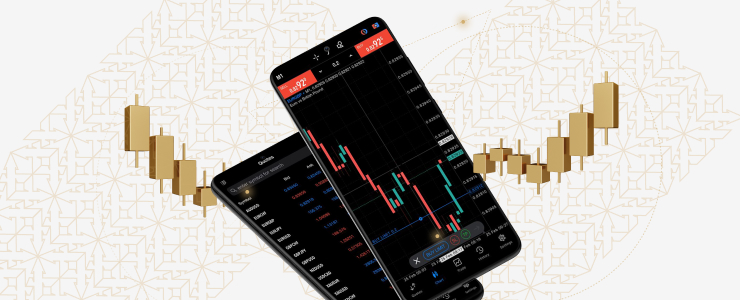Economic news can affect markets in the blink of an eye. A solid trade can still lose by day’s end.
Unexpected reports or political announcements can cause this.Traders who ignore news face faster losses.
Those who plan ahead can turn opportunities into profit. For forex traders, knowing how to adapt their plan around news is key.
In this article, we’ll look at how economic news can dramatically reshape your trading strategy overnight. We’ll go through the reasons why news matters, how to trade it and hedge against risks as well as how to practise so that you can potentially generate revenue.
What does trading the news mean?
Trading the news means keeping up with the latest economic updates, reports and announcements and adjusting your trades based on how the market reacts. It is a key part of fundamental analysis, helping traders determine whether an asset is over- or underpriced by examining economic trends, company data, and government policies.
Breaking news can change how traders feel about the market right away, which often leads to sudden price movements as they think about their positions again. When fundamentals change, there is an increase in volatility which creates both risks and opportunities. That is the reason why staying informed and ready to act is essential when trading the news.

Why economic news is important in forex trading
The forex market responds strongly to macroeconomic data, central bank decisions, inflation reports and geopolitical events. If news differs from what the market expects, traders quickly adjust currency prices, causing large market movements. Studies actually show that more frequent or sudden news increases volatility in forex rates.
Another reason why news is a powerful tool is because a lot of traders share similar expectations. When an important report comes out unexpectedly, many traders adjust their positions quickly, causing prices to move sharply. Often, it is wiser not to try predicting the results but to wait until the announcement is made and then see how the market reacts before entering a trade.
This helps traders avoid being caught on the wrong side of a sudden move. Market reactions also depend on expectations and when results come as a surprise to traders, this can show that market sentiment is changing and even mean that a new trend is starting.
Often, overnight gaps are a result of news as well. This is when the market opens at a substantially different price than the last close, showing price changes that happened while the market was closed.
That’s why forex trading strategies that ignore news can be caught off guard.
How to prepare before the news
One of the best ways to be ready for the news is planning ahead. Start with a detailed economic calendar, mark the dates, times and expected influence that data releases might have on the currency pairs you trade.
Then, reflect on previous reactions to similar news and consider things like how the market responded when inflation, GDP or employment data surprised the market. You can get some hints from recognising the pattern.
You should also decide beforehand if you will trade during the news or wait it out. If you trade, use smaller positions, wider stop-loss orders or enter gradually. If you are more into playing it safe, you could stay out until the markets calm down again.

What strategies can I use to trade around news?
Trading news is not about guessing numbers, but rather about knowing when to react. Below are some common approaches to use.
Trade the breakout after a quiet period
Before big news, prices tend to move sideways in a tight range. After the report, if the price breaks out strongly in one direction, you can trade in that direction. This approach helps you follow the new trend after the news.
Trade against the first significant move
Prices may move too quickly immediately following the news. Some traders trade in the opposite direction after waiting for the move to slow down. If the initial move was too aggressive, this might work, but it is risky and requires timing.
Set pending orders around key levels
Rather than entering right away, you can place buy or sell orders right above resistance or below support to only enter if the market clearly breaks those levels. Nevertheless, you need to be careful because prices can move sharply back and forth.
Watch out for market gaps
If you keep trades open during news or overnight, prices can open the next day a lot higher or lower than before. This is also known as gap. Some traders expect the price to move back and fill the gap, whereas others expect it to keep going up. Whichever it is, solid risk management is always necessary.
Protecting your trades during news events
Trading during news events can be risky, so it is important to have some risk management tools in place. Before entering any trade, choose how much of your account you are willing to risk and stick to it. Many professional traders usually risk only 1-2% of their account per trade. Always use stop-loss orders to protect your capital but bear in mind that in such a market that moves very fast, these might not trigger exactly where you set them.
It is also good to lower the leverage you use during volatile periods, since high leverage can quickly increase losses. Also, try to avoid trading right before key news releases if you are not completely confident because sudden changes can easily affect your strategy.
Last but not least, practice and review your trades on a demo account before entering with real money. After each trade, review whether you stuck to your plan, used your stop-loss and take-profit orders correctly, and kept emotions from affecting your decisions. It is also a good idea to keep a trading journal with a news tag to help you learn which strategies work best and improve your timing in the long term.

What moves the markets the most?
Some reports like U.S jobs data, interest rate decisions, inflation numbers, GDP growth and retail sales, always draw traders’ attention. When these are released and differ from peoples’ expectations, prices can move a lot.
Occasionally, the market responds too quickly, which results in a sharp decline or increase in prices. When this happens, prices often correct themselves. Being able to spot these extreme moves takes practice and years of experience.
Final thoughts
Economic news has the power to change your trading journey overnight. But, with planning, risk management and quick adjustment, that power becomes an advantage.
Using an economic calendar, choosing a clear news strategy, protecting each trade with predefined risk and reviewing your results are all helpful. In the long term, what once seemed like being chaotic might turn out to be one of your most useful tools.
Disclaimer: This information is not considered investment advice or an investment recommendation, but instead a marketing communication.




